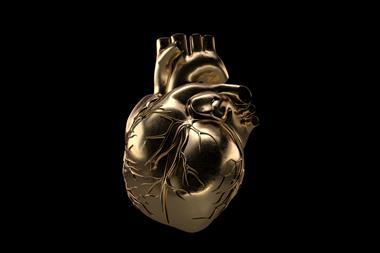Monitoring cardiac troponin proteins is a good way to check, as seen in the case of an unusual poisoning

In February, the US National Institutes of Health (NIH) advises Americans to ‘get heart smart’, protect #OurHearts, and face The Heart Truth®. This is not some anti-Valentine’s Day push from a global leader in medical research, but part of the NIH’s education plan for American Heart Month. In the US, heart disease is the leading cause of death. Rather than a single condition, heart disease includes several cardiac maladies that may be silently lurking and undiagnosed until ailments like an arrhythmia (irregular heartbeat) or a myocardial infarction (heart attack) manifests. Each year, symptoms pointing to a myocardial infarction bring about 20 million patients to emergency departments in North America and Europe.1
Rather than unique red flags, myocardial infarction symptoms – including weakness, fatigue, nausea, vomiting, shortness of breath, and chest pain – are also hallmarks of ‘noncardiac and often benign disorders’.1 It is far easier to spot a broken heart in the colloquial sense than in a clinical one.
Diagnosing myocardial infarction quickly and reliably is crucial for patient care. An ‘indispensable tool’ in current diagnosis regimes are cardiac troponin assays.2 Cardiac troponin proteins, such as troponin T and I, are localised in the myocardium (heart muscle) and integral to heart muscle contraction.1–5 Myocardial injury or necrosis releases cardiac troponins into the blood, and so monitoring these biomarkers enables continued evaluation of a patient’s condition and treatment.
The current generation of highly sensitive troponin assays for clinical use feature quantitative immunochemical techniques, such as those available from Abbott Laboratories and Roche Diagnostics.6 Abbott’s offering employs a quantitative chemiluminescent microparticle immunoassay (CMIA) for troponin I that reportedly provides results within 16 minutes. Roche’s standard sandwich electrochemiluminescence immunoassay (ECLIA) featuring two monoclonal antibodies for troponin T produces results within 18 minutes, though their short turnaround time (STAT) version of this assay cuts that wait in half by condensing a two-step incubation to a single step.
Rapid results helped doctors at Germany’s University Hospital Heidelberg treat a 74-year-old woman presenting with nearly all those not-unique to myocardial infarction symptoms listed above.7 Troponin T monitoring alerted doctors that their patient had an acute myocardial injury or a type of acute myocardial infarction without an easily identifiable electrical pattern observable in a recording of the heart’s electrical signals (electrocardiogram). What cardiac troponin tests did not – and cannot – reveal is what caused the acute injury or myocardial infarction. It could be heart disease, but it could also be other causes of heart damage – including poisoning.8,9
With the symptoms presented, amateur sleuths could reasonably suspect arsenic as the cause. They would be off by one proton. Selenium, both essential to human health and highly toxic, was behind the woman’s ill health.10 She regularly took nutrition supplements – including sodium selenite capsules. Her typical capsule dose of 125 micrograms was well below the established tolerable upper limit of 300–400 micrograms daily.11 A mistake was made when she ran out of capsules and took 125 milligrams of ‘sodium selenite powder from her husband’s laboratory as a substitute’. Within an hour, she was hit with an array of symptoms ‘clearly associated with the selenium intoxication’.7
Cases of selenium poisoning are rare and symptoms tend to develop triphasically – gastrointestinal ailments first, muscle weakness next, and lastly the cardiovascular phase.12 Even more rare than selenium poisonings are associated fatalities, which generally result from too much fluid in the lungs (pulmonary oedema) or a failure of the heart and circulatory system.10
Though the Heidelberg patient suffered severe heart muscle damage due to sodium selenite intoxication, she improved rapidly. During hospitalisation, serial serum troponin T and selenium measurements showed a steady decline in the levels of both over the next few days. Day nine saw a normalisation of troponin T levels and the patient symptom-free.
There was no antidote or wonder drug that aided her recovery. The write-up of this case in the Journal of the American College of Cardiology: Case Reports relayed that ‘the therapy of choice consists of stopping the exposure and alleviating symptoms’ as ‘there are no antidotes, and the chelators seem to increase the toxicity of selenium’.
On occasion, cutting out the source of toxicity, some time, and a little TLC is exactly what’s needed to fix a broken heart.
References
1 R Twerenbold et al, J. Am. Coll. Cardiol., 2017, 70, 996 (DOI: 10.1016/j.jacc.2017.07.718)
2 D R Lazar et al, Dis. Markers, 2022, 2022, 9713326 (DOI: 10.1155/2022/9713326)
3 C Barberi and K E van den Hondel, Forensic Sci. Int., 2018, 292, 27 (10.1016/j.forsciint.2018.09.002)
4 C K Zoltani, Chapter 11: Cardiovascular toxicity biomarkers. In Biomarkers in Toxicology (ed. R C Gupta). Academic Press, 2014
5 A H B Wu, Frontiers in Laboratory Medicine, 2017, 1, 144 (DOI: 10.1016/j.flm.2017.09.003)
6 L Li et al, Clin. Chem. Lab. Med., 2023, 62, 353 (DOI: 10.1515/cclm-2023-0529)
7 V Stroikova, D Regul and B Meder, JACC Case Rep 3, 2021, 3, 811 (DOI: 10.1016/j.jaccas.2020.12.051)
8 S Remmer et al, Forensic Sci. Int., 2013, 233, 154 (DOI: 10.1016/j.forsciint.2013.09.010)
9 B Patel et al, J. Clin. Med. Res., 2023, 12, 5529 (DOI: 10.3390/jcm12175529)
10 K A See et al, Med. J. Aust., 2006, 185, 388 (DOI: 10.5694/j.1326-5377.2006.tb00616.x)
11 J K MacFarquhar et al, Arch. Intern. Med., 2010, 170, 256 (DOI: 10.1001/archinternmed.2009.495)
12 H A Spiller and E Pfiefer, Forensic Sci. Int., 2007, 171, 67 (DOI: 10.1016/j.forsciint.2006.06.077)

















No comments yet